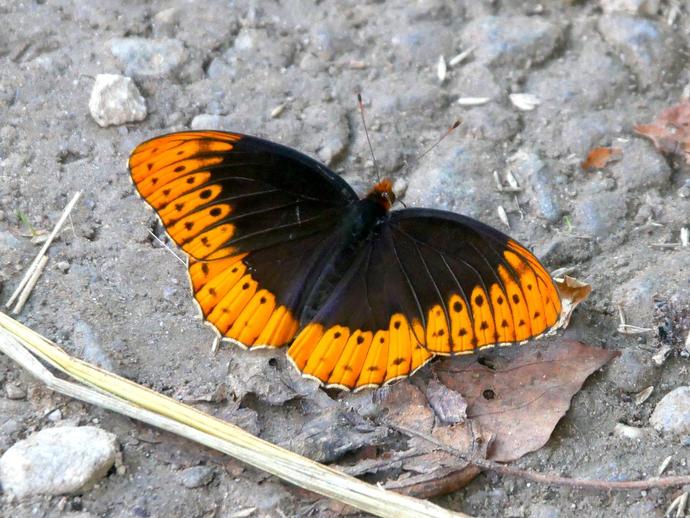July 7, 2020
Last week I was out taking nature photographs (like I do) when I spotted an unusual-looking butterfly that I couldn't recall ever seeing before. I snapped some pictures and didn't think too much of it until yesterday, when I decided to try and identify it.
I soon learned that I'd spotted one of Virginia's rare and highly sought after butterflies: the Diana fritillary (Speyeria diana). No kidding; it's listed on the Virginia Department of Conservation and Recreation's Atlas of Rare Butterflies, Skippers, Moths, Dragonflies and Damselflies (https://www.vararespecies.org/list), and according to that website, it hasn't been spotted in Patrick County since prior to 1950!
The Diana fritillary is strongly sexually dimorphic, which means the males and females look different. This one is a male, while the females have blue coloration instead of orange and look similar to pipevine swallowtail butterflies (Battus philenor). The females lay their eggs near violets, which are the host plant for the caterpillars. The eggs hatch and the tiny caterpillars overwinter without feeding, and then feed on the fresh violets when spring arrives.
This butterfly wasn't always uncommon; as recently as the 1800s, it had a pretty wide range, extending all the way to the Ohio River valley. Today, it's found only in the Ozarks and in the southern Appalachians, but even within those ranges, it's not a common sight.
So what happened? The answer, as usual, is man. Deforestation has done a number on these beautiful butterflies, eliminating the old growth forests where they once thrived. Mountaintop removal for coal mining has also destroyed a lot of the habitats that these butterflies once called home.
Still, it's good to see that they're still around, and it just goes to show that you should always keep your eyes peeled when you're out in nature. You never know what you'll find! #BenInNature
This post brought to you by VMNH Corporate Supporter Everything Outdoors, LLC.
ABOUT THIS POST
Social distancing can be difficult, but it presents a great opportunity to become reacquainted with nature. While he is working from home, Administrator of Science Ben Williams is venturing outdoors each day to record a snapshot of the unique sights that can be found in the natural world.
NATURE PHOTO IDENTIFICATIONS
If you discover something in nature that you would like help identifying, be sure to message us right here on Facebook with a picture (please include location and date of picture) and we'll have our experts help you identify it!

 Hours & Admissions
Hours & Admissions Directions
Directions

